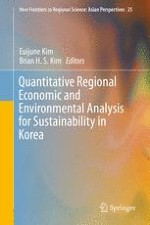2016 | OriginalPaper | Buchkapitel
Need for Coordination between Greenhouse Gas and Pollution Abatement Regulations: China’s Case and Its Implications for Korea
verfasst von : Kyung-Min Nam
Erschienen in: Quantitative Regional Economic and Environmental Analysis for Sustainability in Korea
Verlag: Springer Singapore
Aktivieren Sie unsere intelligente Suche, um passende Fachinhalte oder Patente zu finden.
Wählen Sie Textabschnitte aus um mit Künstlicher Intelligenz passenden Patente zu finden. powered by
Markieren Sie Textabschnitte, um KI-gestützt weitere passende Inhalte zu finden. powered by
